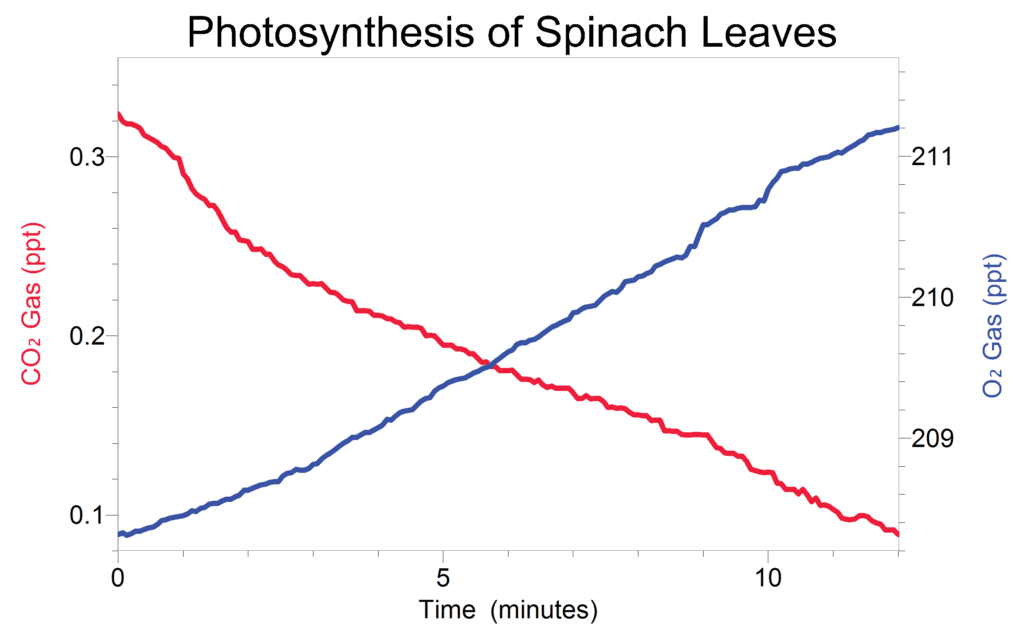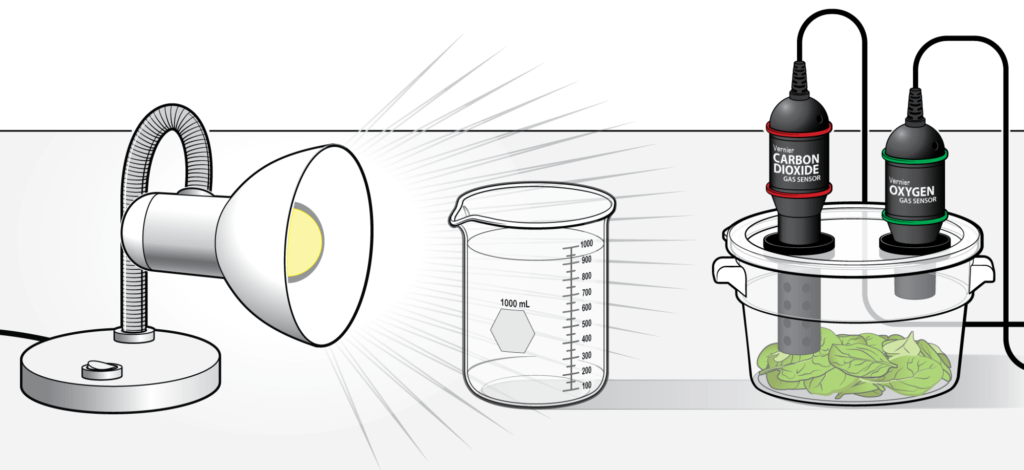Photosynthesis and respiration of plants are fundamental concepts in biology and agricultural science. Our CO2 and O2 Gas Sensors make it easy for your students to study these concepts, producing beautiful data as shown here. However, you can’t just place one leaf in a chamber with a light bulb and expect great results. Our resident biologists have revisited this experiment recently to provide you with the following tips and tricks for consistently good results.


- Use fresh, turgid spinach leaves that are free of preservative sprays. Using plant tissue that is old or using outdoor plants that have slowed down for the winter will not work well.
- Store leaves in a cooler until the time they are used.
- Use the BioChamber 2000 as the sample chamber, and fully line the bottom with leaves to maximize surface area. Some overlap of leaf edges is acceptable, but avoid stacking them. The O2 Gas Sensor needs plenty of leaf surface area to register a change in oxygen concentration.
- Use a light source with strong output in the red and blue wavelengths. LED plant lights work exceptionally well and produce very little excess heat.
- A heat sink placed between the light source and the biochamber will absorb heat. We recommend using a heat sink if your light source is an incandescent or halogen bulb. A 1000 mL beaker of water works well as a heat sink.
- Be patient. Plants may require a several minute lag time for measurable photosynthetic activity to surpass cellular respiration.
By following these suggestions, you and your students should get good results every time.
Download Updated Instructions
- Photosynthesis and Respiration (O2)
- Photosynthesis and Respiration (CO2)
- Photosynthesis and Respiration (CO2 and O2)
Where can I buy the light source for the recommended photosynthesis setup?
